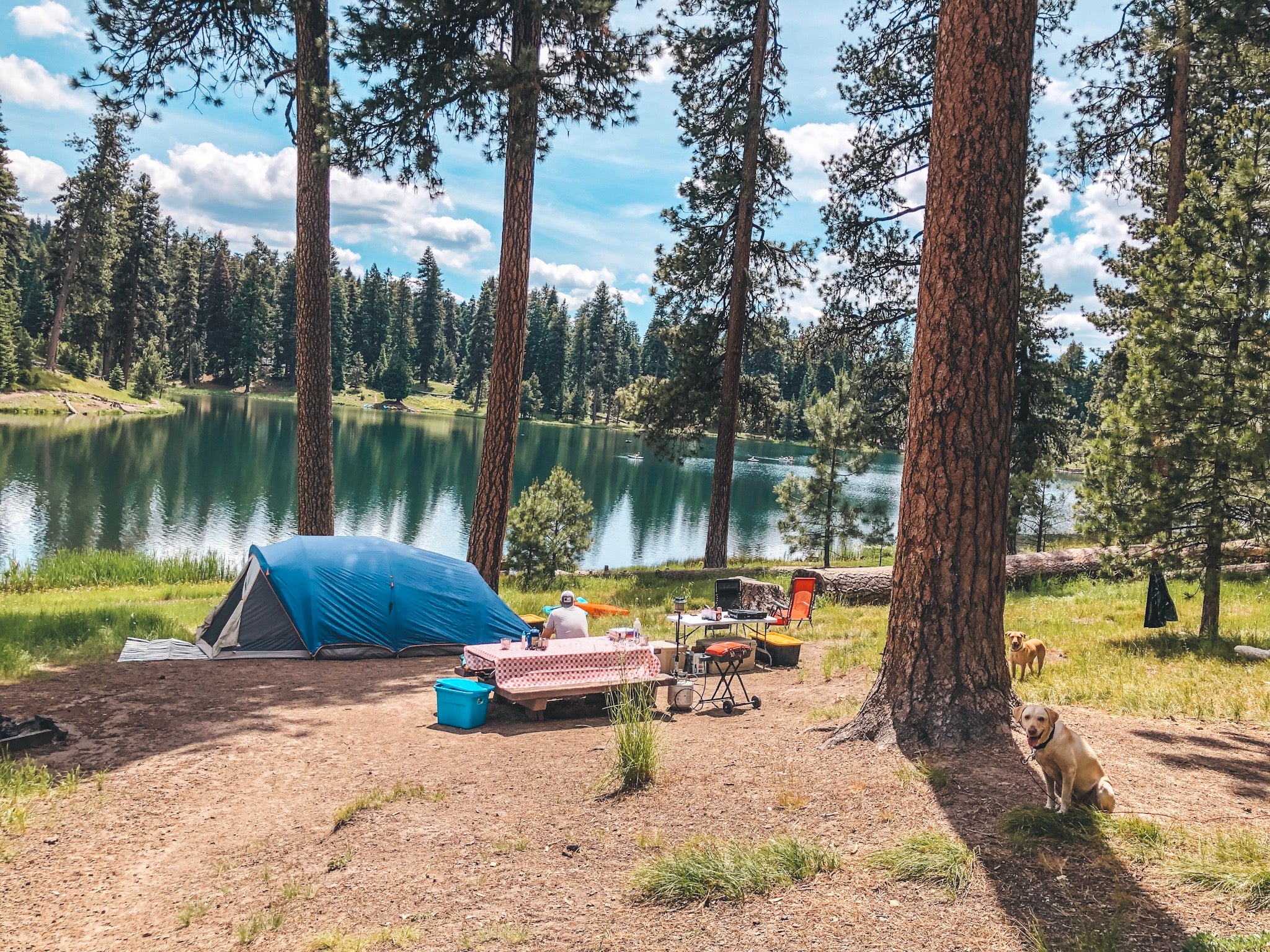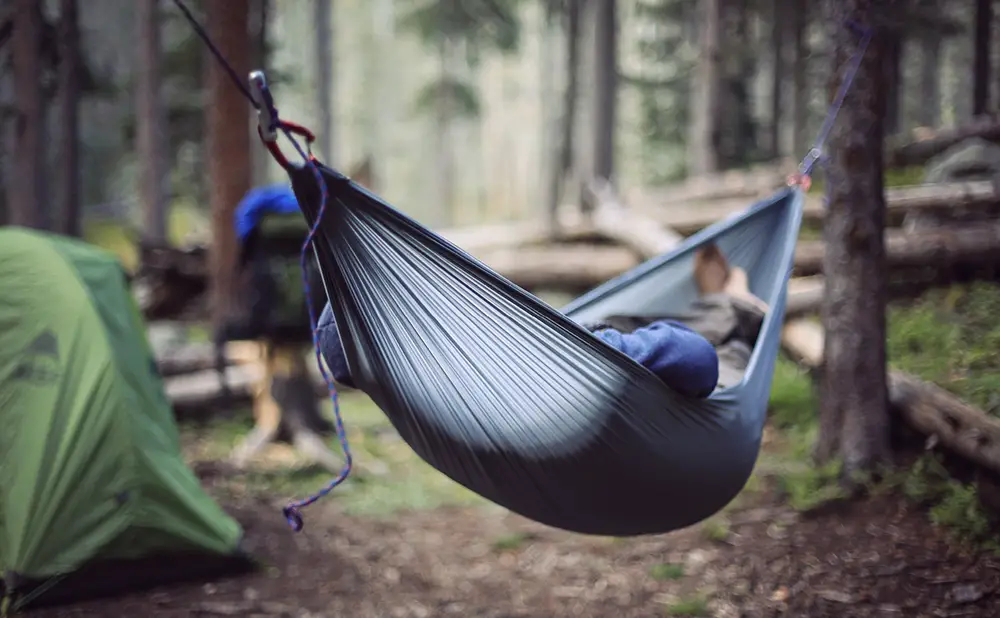Camping on wet ground can be uncomfortable and hazardous. To prevent discomfort and potential dangers, it’s important to take necessary precautions and prepare accordingly.
Camping is a fun outdoor experience, but it can easily turn unpleasant if you’re not prepared for the elements. Camping on wet ground can make things even more challenging, and potentially dangerous. When it rains or the ground is moist, it can seep into your tent and sleeping bag, causing discomfort throughout the night.
Additionally, wet and slippery ground can increase the likelihood of accidents, especially if you’re walking around in the dark. However, with proper preparation and some essential gear, you can enjoy your camping trip even if the ground is wet. In this article, we’ll discuss some tips to help you prepare for camping on wet ground and make your experience a more enjoyable one.

Credit: thedyrt.com
Contents
- 1 Understanding The Challenges Of Camping On Wet Ground
- 2 Essential Gear For Camping On Wet Ground
- 3 Setting Up Camp On Wet Ground
- 4 Staying Safe And Dry While Camping On Wet Ground
- 5 Breaking Camp And Leaving No Trace On Wet Ground
- 6 Frequently Asked Questions Of Camping On Wet Ground
- 6.1 Can You Camp On Wet Ground?
- 6.2 How Do You Keep Your Belongings Dry When Camping On Wet Ground?
- 6.3 What Is The Best Type Of Tent For Camping On Wet Ground?
- 6.4 How Do You Stay Warm When Camping On Wet Ground?
- 6.5 Can You Start A Campfire On Wet Ground?
- 6.6 How Do You Avoid Environmental Damage While Camping On Wet Ground?
- 7 Conclusion
Understanding The Challenges Of Camping On Wet Ground
Camping on wet ground can present unique challenges. Proper assessment of the terrain before setting up camp is essential. Ascertaining potential hazards such as flood-prone areas or possible landslides is crucial. Choosing a suitable campsite is also important. Look for areas that are well-drained and avoid depressions that may collect water.
A slightly elevated area may also be ideal. When setting up your tent, use a groundcloth to add an extra layer of protection. Use quality waterproof gear and double-check that your tent is secure. With careful planning and preparation, camping on wet ground can still be a fun and enjoyable experience.
Essential Gear For Camping On Wet Ground
Camping on wet ground can be challenging, but having the right gear can make all the difference. A waterproof tent is crucial, but it’s important to choose the right one for the conditions. Consider the material, size, and shape when making your selection.
A groundsheet is also essential to protect your tent bottom from moisture and punctures. As for sleeping gear, make sure it’s waterproof and comfortable. Don’t forget about clothing either. Opt for quick-drying materials and avoid cotton. Layering is key to staying warm and dry.
With the right gear, camping on wet ground can actually be quite enjoyable.
Setting Up Camp On Wet Ground
Setting up camp on wet ground can be quite a challenge. One of the biggest concerns is the stability of your tent. Properly staking your tent can help with this, especially on wet ground. Adding stability to your tent can help prevent water damage.
Creating a rainfly is another great option. If water does seep into your tent, it can be unpleasant and unhealthy. Groundsheet placement and other preventative measures can help keep the water outside. Finally, maintaining a dry living environment is essential.
Staying dry and warm while camping on wet ground is possible with these tips and tricks.
Staying Safe And Dry While Camping On Wet Ground
Camping on wet ground requires proper preparation to ensure safety and comfort. The importance of proper ventilation in your tent cannot be overstated. Without proper ventilation, condensation can occur, resulting in a damp interior. This can increase the risk of hypothermia and other cold-related injuries.
To prevent this, consider using a rainfly, opening vents, or using a separate shelter for cooking and other activities. Managing moisture that accumulates in your tent is also crucial. Use a towel or cloth to wipe down any wet surfaces, and keep wet gear and clothing outside of the tent or in designated areas.
When cooking or performing other camp activities, it’s important to stay dry. Consider using a tarp or other waterproof material to create a drip-free area. By following these simple tips, camping on wet ground can be a comfortable and safe experience.
Breaking Camp And Leaving No Trace On Wet Ground
Camping on wet ground can be a challenging experience, but with the right tips and tricks, you can still enjoy a comfortable and safe trip. When breaking camp, make sure to leave no trace on the wet ground by properly packing and storing your wet gear.
It’s also important to dispose of waste properly, especially on damp ground where it can easily pollute the environment. To minimize your impact on the terrain when camping, consider using techniques such as tarping, surface smoothing, and low-impact fires. By following these guidelines, you can avoid damaging the ecosystem while still enjoying all the benefits of a fun and memorable camping experience.
Frequently Asked Questions Of Camping On Wet Ground
Can You Camp On Wet Ground?
Yes, you can camp on wet ground. However, you need to prepare yourself with the right gear, including a good quality tent, waterproof clothing, and sleeping gear. Choose a proper campsite that is not prone to flooding, and make sure to keep your equipment off the ground.
How Do You Keep Your Belongings Dry When Camping On Wet Ground?
To keep your belongings dry when camping on wet ground, pack them in waterproof bags or dry bags. Use a waterproof cover for your backpack and ensure that your tent, sleeping bag, and clothing are made of waterproof or water-resistant materials.
What Is The Best Type Of Tent For Camping On Wet Ground?
The best type of tent for camping on wet ground is a waterproof tent or a tent with a high hydrostatic rating. Tents made with high-quality waterproof materials can keep you dry in wet and rainy conditions. Make sure to check the waterproof rating before buying a tent.
How Do You Stay Warm When Camping On Wet Ground?
To stay warm when camping on wet ground, use proper insulation. Bring insulated sleeping bags and sleeping pads. Wear waterproof clothing and change into dry clothes before bed. Use hand warmers, a hot water bottle, or a campfire for added warmth.
Can You Start A Campfire On Wet Ground?
Yes, you can start a campfire on wet ground. You can use natural materials like dry grass, pine needles, and small twigs to create a base layer for your fire. Use a fire starter or waterproof matches, and choose a spot that is protected from wind and rain.
Always adhere to fire safety rules and regulations.
How Do You Avoid Environmental Damage While Camping On Wet Ground?
To avoid environmental damage while camping on wet ground, always follow leave no trace principles. Choose designated campsites and fire rings. Avoid setting up a tent and trampling on vegetation. Use natural or already-existing paths. Pack out everything you pack in.
Conclusion
As we come to the end of this blog post, we hope you’ve learned valuable insights about camping on wet ground. Camping can be fun and adventurous but, it’s essential to prepare for unexpected weather conditions, especially when dealing with wet ground.
With the right gear, preparation, and approach, camping on wet ground can be a fulfilling experience. Remember to choose a suitable campsite, set up camp correctly to avoid water pooling, and packing the right gear to keep yourself warm and dry.
Additionally, ensure you’re adhering to campsite regulations and leave no trace principles. Lastly, we encourage everyone to stay safe and have fun while commingling with nature. With the right mindset and preparation, you can enjoy a camping adventure, even on wet ground.

